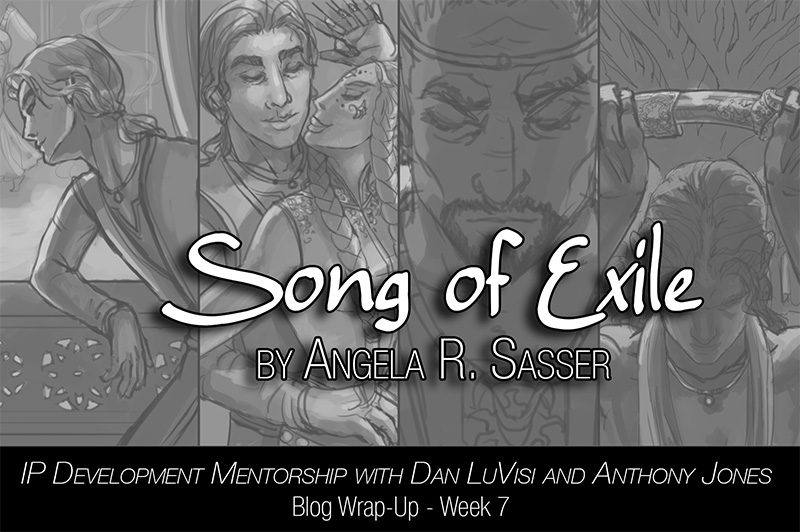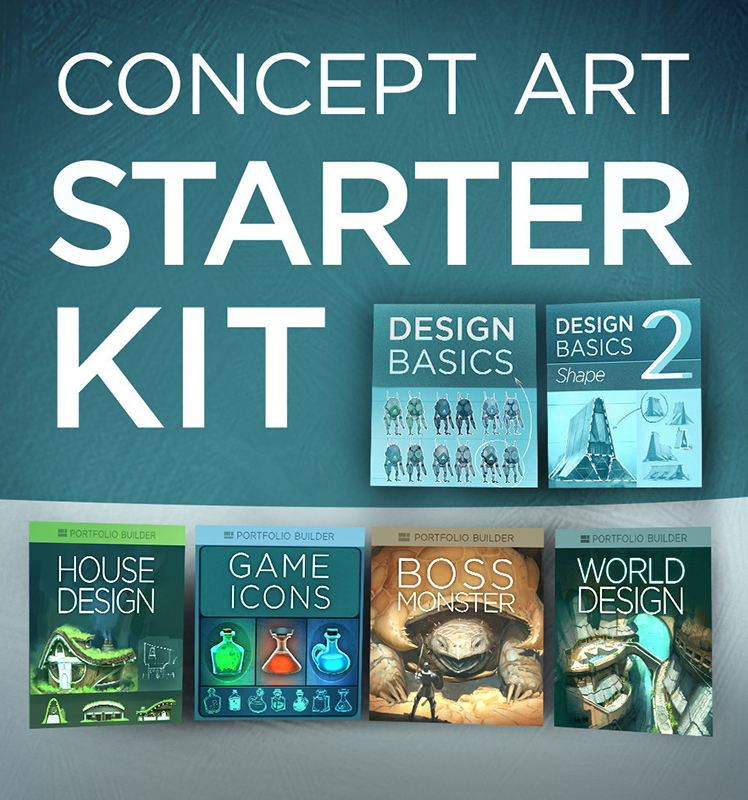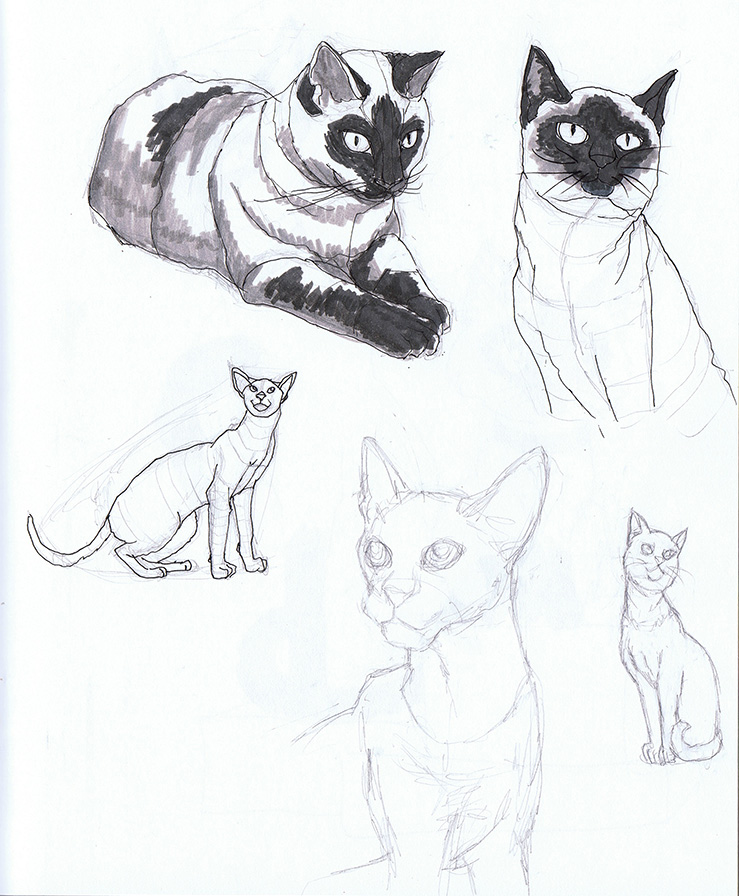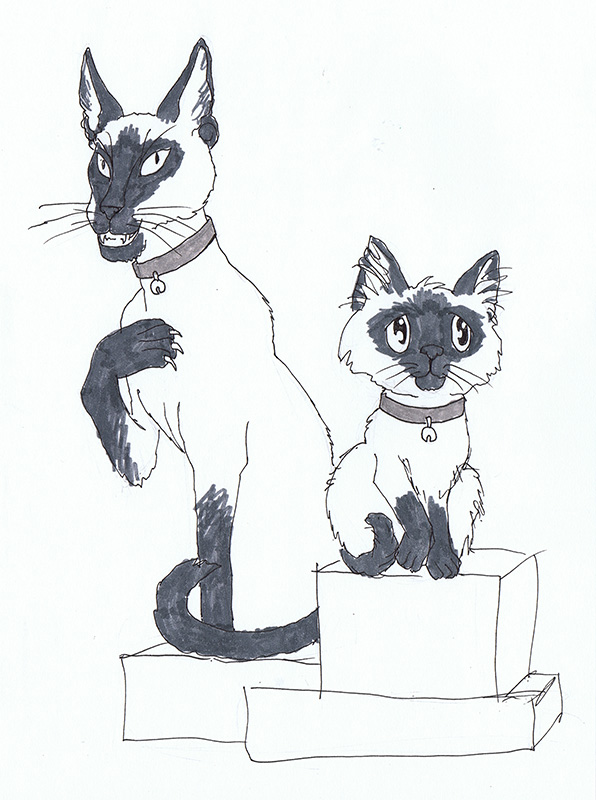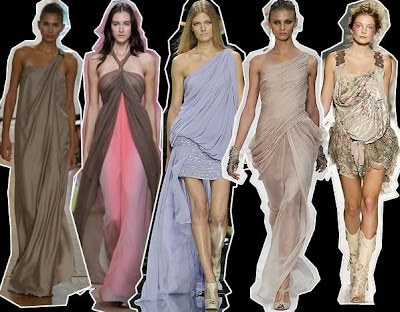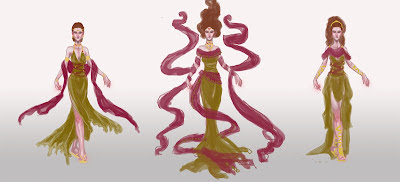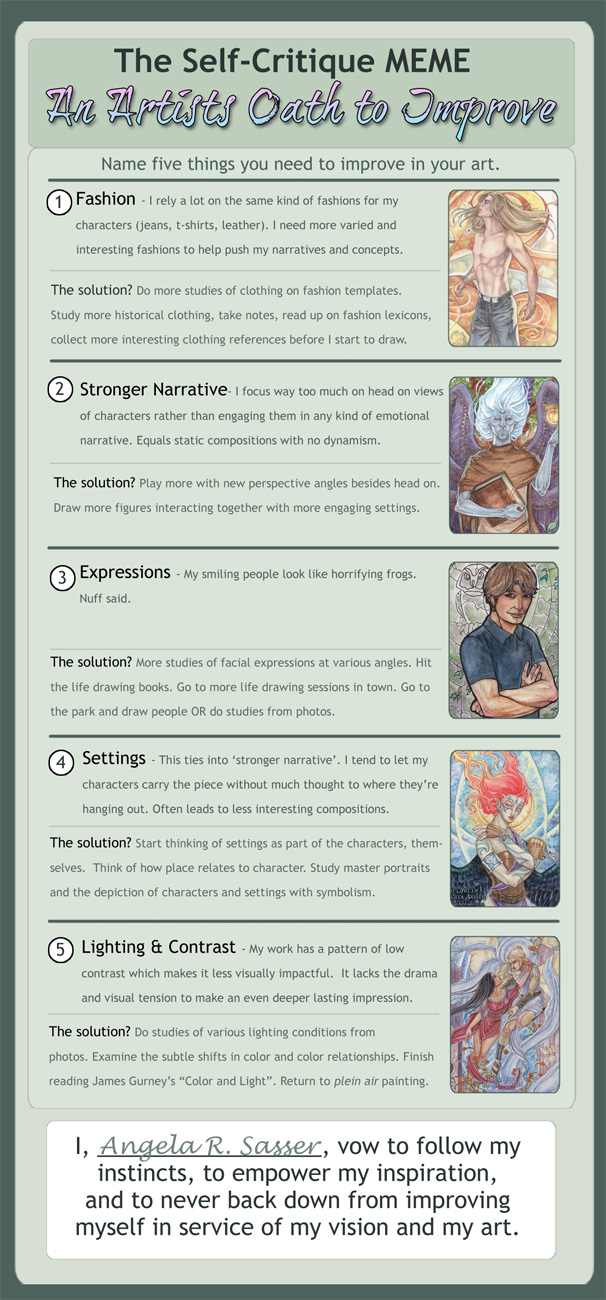DISCLAIMER: I don’t mind you guys sharing my thoughts about the mentorship with others. However, if you don’t see the art or writing bits up at SongofExile.com, that means I’d prefer you keep it between us! Enjoy!:)
It was another sleepless week spent on making illustrations for my pitch! I’m still only a little past the midpoint with 8 of 15 total illustrations completed in grayscale, with the initial illustration of the duel pegged for completion to fully painted color.
I also got to practice pitch once more, this time to Kalan Ray, a visdev artist with a history as a linguist, which gave him some insight on the historical sources I’ve been drawing on for my story (the Mongols, kings and succession, etc.). This was the first time I’ve actually had a chance to pitch my revised book trailer script with the new POV and it was a huge success! Kalan gave me the great complement that he would totally read my book when it’s done, since it was right up his alley of interests. Best. Feedback. Ever!
There’s really nothing like validation from a pro to motivate a person! I’m just going to enjoy my ego fluffing for a small bit before I realize that after this course is over, I’ll actually need to Write The Thing.
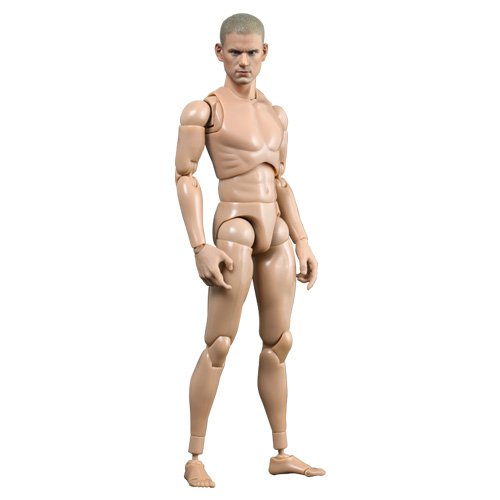
Another awesome thing that happened this week is that my boyfriend gifted me with this TrueType male figure! We found a great price for him on Amazon. It may just look like an overpriced doll, but its extreme points of articulation allow for it to be posed in ways the usual artist mannequins can’t and make for great photo reference, especially for seeing how lighting works, draping of clothing, and placement of cast shadows.
The female TrueType figure is also in the mail right now. I’m so excited! My boyfriend is best boyfriend. These figures are going to be invaluable to my workflow. Thanks to this mentorship, I’m also planning to add 3D modeling with Daz Studio (a free 3D program) to my repertoire so I can light scenes and have more fine control over lighting and camera placement, but the program was a little too much for me to try to learn this week. I did manage to create a reference photo with Daz for the illustration I need to work to color, but it could definitely use improvement. Beware the naked manbutt if you want to see it! It’s here.
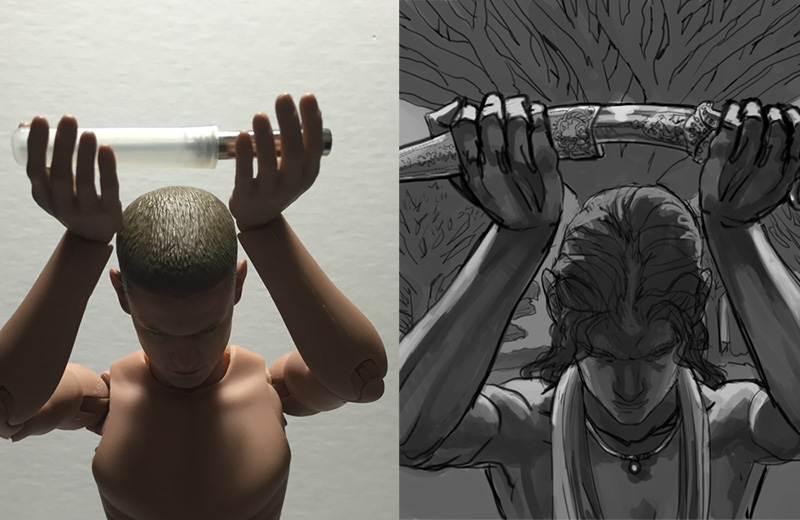
Another technique I’ve added to my workflow this week is photo tracing. I feel like a cheater doing this thanks to strict gallery schooling in college where true skill meant you could draw everything from scratch, but since I have so little time to get these done, I’ve been playing fast and loose with photos.
As you can see above, I pretty much traced my photo reference of the figure, then altered it to suit my needs. I also used two different photos of Blood Dragon Trees spliced together for the background. Photo manipulation creates a base quickly that I can refine for later, a technique I was introduced to by Rebecca Guay, actually! It can save a lot of time and also help your art feel more grounded, though you must also know when to deviate from your reference, which is a hard skill to master, in and of itself.
Next week is my last week of the mentorship! Can I finish all of the illustrations and face the final critique of Max Landis, who gave me such great crit before? Will my changes be improvements? Stay tuned, Bat-fans!
Week 7 Art Wrap-Up
Read about the rest of my journey with the IP Development Mentorship here:
Week 1
Week 2
Week 3
Week 4
Week 5
Week 6
Week 7
Week 8
Final Week
Final Critique
